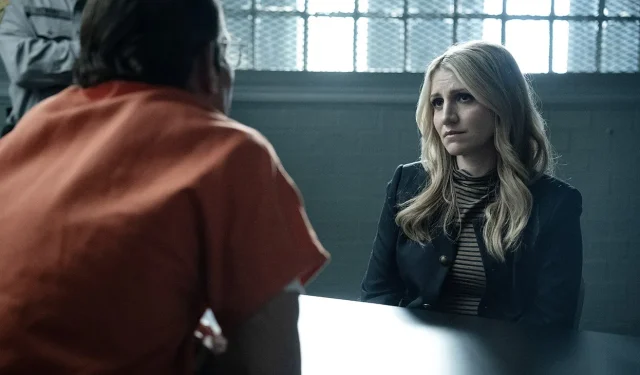Exploring the Unique Narrative of Paramount+’s Happy Face
Paramount+ presents a thought-provoking take on true crime with its series Happy Face, where all the murders transpired in the past and are intentionally left off-screen. This creative choice intensifies the unsettling nature of the narrative, as the series is not merely about recounting crime but dives deeper into the emotional ramifications for those affected.
The series revolves around the notorious “Happy Face Killer,” Keith Hunter Jesperson, portrayed by Dennis Quaid. Jesperson is a convicted murderer who has confessed to taking the lives of eight women and claims to have killed many more. His daughter, Melissa Moore (played by Annaleigh Ashford), dedicates her life to supporting victims’ families—a poignant backdrop that diverges from traditional true crime storytelling. Since its premiere on March 20, Happy Face has absorbed viewers with its novel strategy of removing graphic reenactments and instead focusing on the intricate relationship between the convict and his troubled daughter.
Insight from the Creative Team
Showrunner Jennifer Cacicio, alongside executive producers Michelle and Robert King, shared insights with The Hollywood Reporter on their nearly eight-year journey to bring this story to life. Their discussions revealed a commitment to authenticity and emotional depth while navigating the challenges of depicting such weighty material responsibly.
Jennifer Cacicio: “We explored it but ultimately decided that it was scarier to not see it. I think we can imagine the worst… To me, the scene in the pilot where Dennis is just talking about how he kills a woman—it’s evocative and unsettling.”
The producers emphasized that displaying violence distracts from the core theme: the relationship between a father and daughter. This choice stemmed from a desire to maintain the emotional gravitas of the story without repetitive shocks.
Balancing Artistic Vision and Executive Expectations
Cacicio discussed the evolution of the series throughout its development. Initially conceived more as a slow-burn drama, the executives pushed for a heightened sense of urgency and thriller elements to cater to modern viewing habits.
Addressing the logistical hurdles of obtaining rights to Melissa’s story, Cacicio noted their shared experiences as a significant factor in winning her trust. Her personal connection to Melissa’s background enhanced the authenticity of the narrative.
Cacicio: “I always knew I wanted to fictionalize the story… The podcast didn’t have that [engine].”
The writers opted to introduce fictional elements, including a potential ninth victim, but grounded these narratives in the real-life complexities surrounding Jesperson’s actions and confessions. This blend of fact and fiction serves to engage viewers more profoundly than a straightforward adaptation.
Innovative Approaches to Storytelling
The team also tackled the challenge of balancing screen time between Jesperson and other pivotal characters. They drew inspiration from cinema history, noting the effectiveness of limited screen appearances in building suspense.
As Cacicio reflected, the storytelling is intricately tied to Melissa’s perspective, allowing viewers to witness the unfolding drama primarily through her interactions with her father, which enriches the emotional narrative.
Future of Happy Face
Looking ahead, Cacicio expressed a vision for future seasons, as there are still unfolding aspects of Melissa’s life and ongoing true crime stories she is involved with, such as the Long Island Serial Killer case.
With new episodes streaming weekly on Paramount+, Happy Face invites viewers into a complex exploration of family dynamics amidst an unsettling backdrop, which promises not just suspense but conversations about morality, trauma, and human connection.
Stay tuned, as new episodes air every Thursday leading up to the season finale on May 1.


